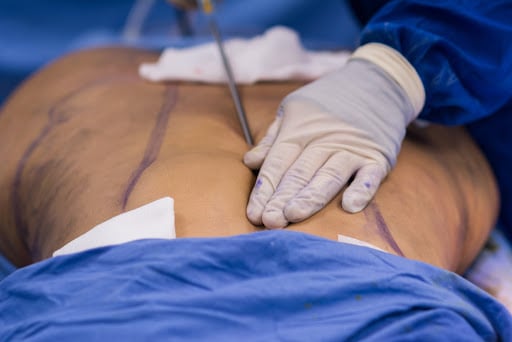Floating Abdominoplasty
What is a floating abdominoplasty? Also known as the FAB procedure, It is an abdominoplasty technique that employs a hip-to-hip scar to detach the navel from its connection to the abdominal wall to allow for a tightening of the stomach muscles, correction of a paraumbilical protrusion and to achieve a more aesthetically pleasing contour in… Read More
Top Doctors For Floating Abdominoplasty Treatments
Top Hospitals For Floating Abdominoplasty Treatments
Floating Abdominoplasty
What is a floating abdominoplasty?
Also known as the FAB procedure, It is an abdominoplasty technique that employs a hip-to-hip scar to detach the navel from its connection to the abdominal wall to allow for a tightening of the stomach muscles, correction of a paraumbilical protrusion and to achieve a more aesthetically pleasing contour in slim patients with minimal skin excesses.
The procedure is similar to a mini-tummy tuck, and it is suitable for patients that have laxity around the navel and mild lower abdominal skin. Also, a stretched navel can be readjusted. Unlike the standard tummy-tuck technique which involves making an incision around the navel before pulling down the skin, during the floating abdominoplasty, the entire navel is detached from the abdominal wall. It is still connected to the overlying skin and with this connection, it is moved down and repositioned. No scar is seen around the new navel position.

Who is a good candidate for floating abdominoplasty?
An individual may benefit from a floating abdominoplasty if they have the following qualities:
- If their navel can be repositioned down 3-4 cm to make it look more natural
- If they have loose skin on their lower abdomen below their navel
- If they have a minor skin laxity that can extend up to about 2 cm above the navel
- If the individual’s belly button appears to be too high.
Not every patient has the exact qualities to undergo this type of procedure; the more common procedures are the mini and the full tummy tucks. This procedure is extremely beneficial to individuals who need repositioning of their navel for them to be more attractive with more natural-looking results.
What are the benefits of floating abdominoplasty?
Some of the benefits of floating abdominoplasty include:
- There is no scar to worry about
- Also, there is a correction of lower abdominal skin laxity.
- The procedure has a shorter and more comfortable recovery than a full tummy tuck.
- And there is a repositioning and a more natural look.
Preparing for a floating abdominoplasty
Before the surgery, the individual will likely undergo blood tests to make sure that they are in good health. They may also be told to:
- Stop smoking
- Quit alcohol
- Quit any medication that may interfere with the healing of the procedure like anti-inflammatory medication, herbal supplements, or any medication that may make the bleeding excessive or interfere with proper blood clotting.
How is the procedure performed?
The umbilical float abdominoplasty incision is made at the base of the abdomen. Through this incision, the skin and the navel along with it are detached from the abdominal wall. The surgeon then tightens the skin by pulling it down towards the pubic area, removing any excess skin in the process. They also tighten the underlying musculature if there is a need for it. As the skin is pulled down and tightened, the navel moves lower on the abdomen. The incisions are then closed with absorbable sutures.
The procedure is quite different from a full tummy tuck, which requires a longer incision along the base of the abdomen from the hip bone to the hip bone as well as an incision within the navel itself. A mini tummy tuck is also different from a floating abdominoplasty as the abdomen does not also move. The procedure only focuses on tightening the area below the navel. The surgery takes about 2 hours to complete; it is done under general anesthesia.

What is the cost of floating abdominoplasty?
The average cost of the procedure is around 6k-7k dollars. This may not include the cost of the anesthesia, the operating room facilities, and other miscellaneous costs. The cost is also dependent on the location of the clinic, the experience of the surgeon, and the sophistication of the clinic. Most health insurance plans do not cover this procedure or its complications, but most surgeons offer attractive financing plans. Some of the costs may include:
- Surgeon’s fee
- Medical tests
- Post-surgery wears and garments
- Anesthesia fees
- Hospital or clinic facility fees
- Medication
It is also very important to be comfortable with the surgeon that will perform the procedure and make sure they are board certified. It is very important to remember that the comfort you have with the surgeon and their experience is almost as important as the final cost of the surgery itself.
Recovery
It is very important to follow the surgeon’s instructions after the procedure. The patient can expect to return to full activity and return to work after about two weeks depending on the level of physical activity involved but it is necessary to avoid any strenuous activity for about six weeks. The patient’s abdomen may be swollen for a few days and there will be drainage to remove excess fluid from the incision sites.
The results of the procedure are usually not apparent for at least three months after all the swelling has gone down. Small asymmetries are inevitable as the body is occasionally asymmetric and sometimes the surgery unmasks that asymmetry. The floating abdominoplasty procedure is an excellent choice for individuals with adequate and excellent shape but who struggle with their tummies and want to take the extra step toward achieving their physical beauty desire. It is also essential to clean the site as instructed by the surgeon, as it will reduce the risk of infection.
The doctor should immediately be contacted if any of the following symptoms are noticed:
- Excessive bleeding along the incision line
- Loss of feeling
- Reduced motion
- Severe pain that cannot be treated with medicine
- Severe swelling, bruising, or redness that does not get any better with time
- Discharges that have an unpleasant smell
- Fever or chills
- Yellowish or greenish discharges from the incision


















































































